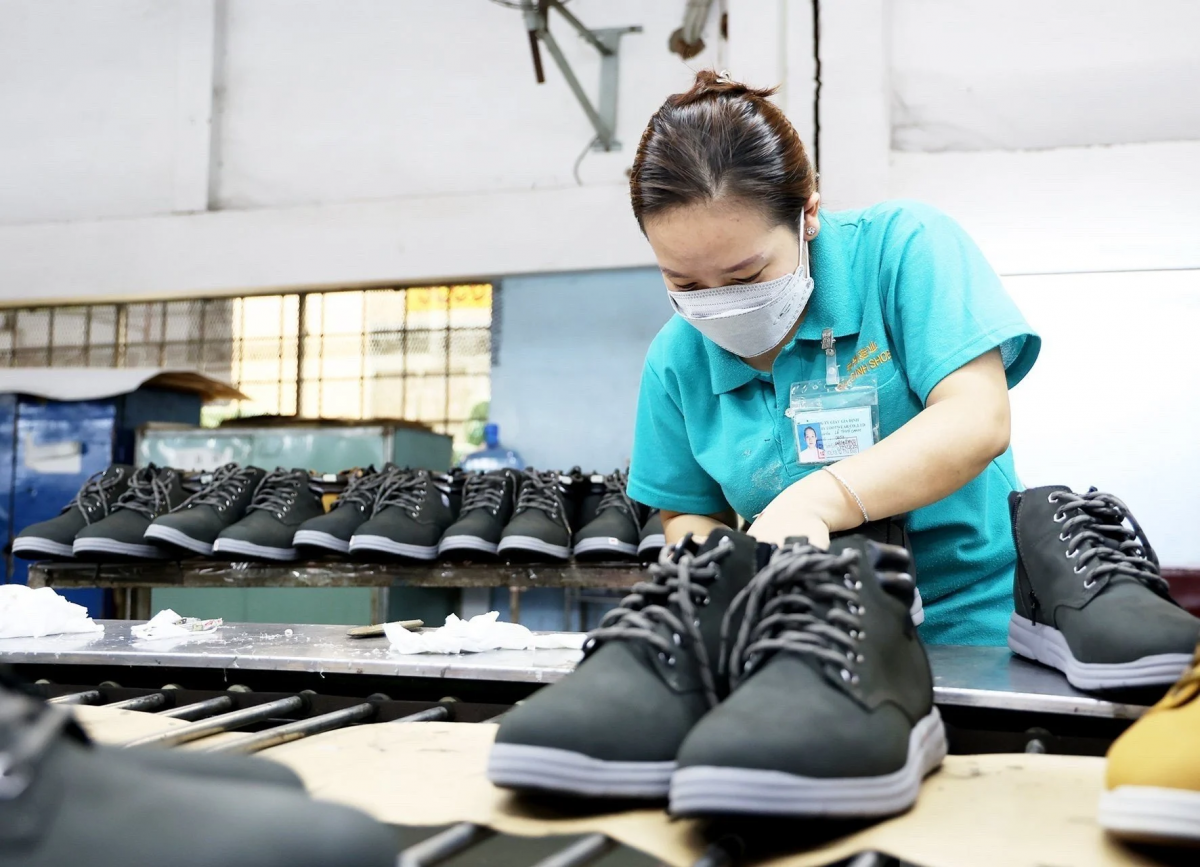
Vietnam–China trade, investment and business networking promotion held in Hanoi
19:05 | 23/03/2025 17:03 | 27/11/2025News and Events
 |
| General Secretary and Vice Chairwoman of the Vietnam Leather, Footwear and Handbag Association Phan Thi Thanh Xuan Photo: Can Dung |
Could you tell us the highlights, including both advantages and difficulties in the export of the leather and footwear industry in 2024?
In 2024, the export revenue of the sector reached over US$26 billion, a year on year growth of about 10 percent. It is worth noting that some enterprises have signed contracts for production orders until mid-2025.
In particular, in 2024, China continued to rise to become a billion-dollar export market of the Vietnamese footwear industry, accounting for nine percent of the total export turnover and ranking only behind the US and the EU. However, there are still markets that saw decreased, or even almost no export turnover, such as Russia and Uzbekistan due to impacts of geopolitical conflicts.
The highlight of the industry was the expansion of exports to some South American markets. In terms of difficulties, orders in 2024 tended to require higher quality and compliance with standards. At the same time, input costs were high, while labor resources were scarce, and export prices were very low.
What do you think the world leather and footwear market will be like in 2025? What do businesses need to keep in mind to maintain stable growth momentum?
Basically, the market developments in 2025 will still continue the trends of 2024, including higher input costs and logistics costs, while export prices will not increase, even are forced to decline.
Regarding the export target in 2025, the sector is still striving for a growth rate of 10 percent compared to 2024 to reach about US$29-30 billion, which depends on the exploitation of new markets, such as the Middle East and South America. Particularly, for the Middle East, Vietnam still has advantages in sports shoes, which are expected to achieve a high growth rate soon.
Green standards, sustainable development are seen as a big challenge in 2025 and the following years. What do you think about this and what solutions does the Lefaso have to accompany businesses?
Vietnam is currently ranked 3rd in the world in footwear production with 1.4 billion pairs per year, ranked 2nd in exports with 1.3 billion pairs per year.
 |
| Import markets require increasingly high standards for footwear products - Photo: Can Dung |
With more than 80 percent of the output is for export, the industry is very susceptible to impacts, including criteria, such as green production, use of recycled materials, environmentally friendly or social responsibility... from importers. In particular, some major export markets like the EU, the US, and Japan are demanding sustainable development in the short term, which will lead to increase in response costs.
With such challenges, the Lefaso hopes that State agencies will consider and harmonize the standards of international organizations, importers, and Vietnam’s policies so that businesses can effectively practice support policies when meeting the required green standards.
Solutions to improving internal capacity and technological innovation for enterprises are also needed. Finally, State agencies need to coordinate with professional associations to quickly and accurately update information on green regulations and green standards of import markets to help businesses plan for their development process.

19:05 | 23/03/2025 17:03 | 27/11/2025News and Events

19:05 | 23/03/2025 16:42 | 27/11/2025Foreign trade

19:05 | 23/03/2025 13:59 | 27/11/2025Foreign trade

19:05 | 23/03/2025 13:54 | 27/11/2025Industry

19:05 | 23/03/2025 00:15 | 27/11/2025News and Events